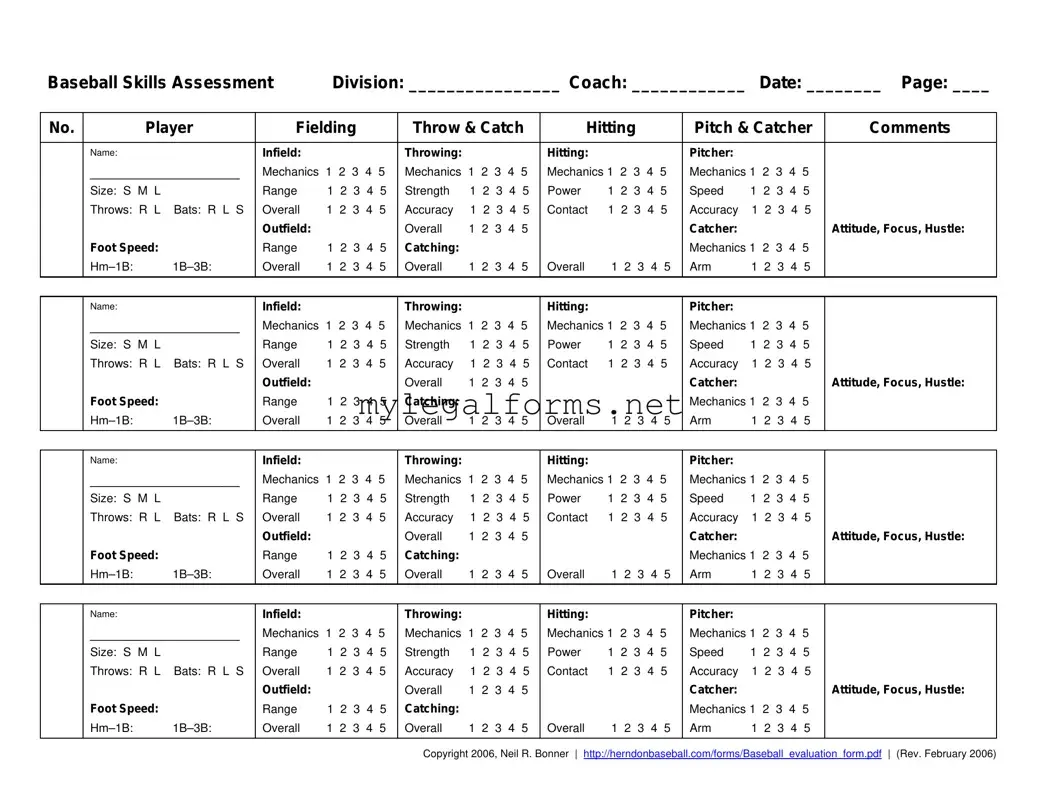Filling out the Baseball Assessment form accurately is crucial for evaluating a player's skills effectively. However, many individuals make common mistakes that can lead to misleading assessments. Understanding these errors can help ensure that the evaluation process is both fair and thorough.
One frequent mistake is failing to provide complete information in the designated fields. For instance, not filling out the player's name, coach's name, or date can create confusion and hinder the assessment process. Each section is designed to gather specific information, and leaving any part blank can lead to incomplete evaluations.
Another common error is not using the correct scoring scale. The assessment form employs a five-point scale to rate various skills. Players may receive scores that do not accurately reflect their abilities, such as giving a score of five for a skill that is only average. This misrepresentation can skew the overall evaluation and affect team selection.
Additionally, some evaluators overlook the importance of detailed comments. While the form includes checkboxes for skills, comments provide context and insight into a player’s performance. Without these notes, the assessment may lack the depth needed for a comprehensive understanding of a player's strengths and weaknesses.
Moreover, individuals sometimes neglect to assess all relevant skills. The form includes various categories, such as fielding, hitting, and pitching. Focusing only on one area can result in a biased evaluation. Each skill contributes to a player's overall performance, and all should be considered for a balanced assessment.
Another mistake is misjudging a player's attitude, focus, and hustle. These qualities are just as important as technical skills. Failing to evaluate these attributes can lead to overlooking players who may excel in teamwork and determination, even if their technical skills are not the highest.
Lastly, some people may rush through the assessment process, leading to hasty decisions. Taking the time to observe each player thoroughly is essential. Quick evaluations can result in missed opportunities to identify potential talent. A careful and considered approach ensures that every player is given a fair chance to showcase their abilities.
By avoiding these common mistakes, coaches and evaluators can create a more effective and equitable assessment process. This not only benefits the players but also enhances the overall quality of the team.

